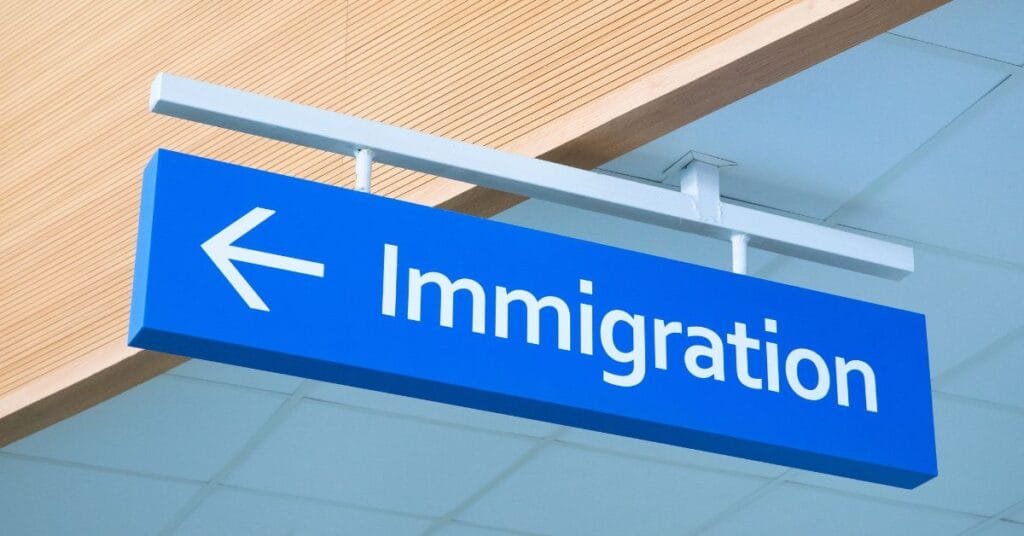Summary
This step-by-step guide to UK University admission walks you through the complete admission process based on my personal experience—from choosing the right university and filling out your application to securing your CAS letter and applying for your student visa. You’ll also learn about essential steps like taking the TB test, arranging your financial documents, exploring scholarships, and preparing for your flight. Whether you’re applying on your own or with a consultant’s help, this guide simplifies every phase to help you confidently start your journey to study in the UK.
Introduction
If you’re dreaming about studying in the UK but have no idea where to start, you’re in the right place. When I was applying to a UK university, I had a lot of questions—about the process, the documents, the visa, and of course, the financial side of it all. That’s why I decided to put together this step-by-step guide based on my personal experience, so that you can navigate your own journey with clarity and confidence.
This guide walks you through everything—from choosing the right university to getting your visa and boarding your flight. Whether you’re applying for an undergraduate degree or a postgraduate program, this post has you covered with practical advice, proven steps, and insider tips.
Why Study in the UK?
Studying in the UK opens doors—not just academically, but professionally and personally too. Here’s why thousands of students choose the UK every year:
- World-Class Education: UK universities are globally ranked and recognized for their high academic standards. Degrees from the UK carry weight around the world.
- Shorter Courses: Undergraduate degrees take 3 years, and master’s degrees just 1 year—saving you time and money.
- Multicultural Environment: The UK is home to students from every continent. You get to learn not just in the classroom but from your peers too.
- Post-Study Work Opportunities: The Graduate Route Visa allows you to work in the UK for up to 2 years after graduation (3 years for PhD grads).
- Travel and Exploration: Being in the UK means easy access to Europe.
Who Is This Guide For?
This guide is perfect for:
- First-time international applicants who have never applied to a university abroad.
- Students from countries like Pakistan, India, Bangladesh, Nigeria, and more where visa and health requirements like the TB test are part of the process.
- Undergraduate and postgraduate applicants who want a clear breakdown of what to do and when to do it.
- Anyone who feels overwhelmed and just needs a friendly, straightforward roadmap.
Whether you’re still exploring your options or already planning your finances, this guide will help you take each step with confidence.
Step 1 – Finding the Right University for Your Course
Before you even think about visas, bank statements, or flights—you need to know where you’re going and why. This is one of the most important steps in your UK admission journey. And if done right, it sets the tone for everything that follows.
Identify Your Career Goals
Let me say this from my own experience: don’t choose a course just because it sounds good or because someone else picked it. Take some time to reflect on where you want to see yourself in 5 or 10 years. What skills do you need? What industry do you want to work in? What excites you?
I knew I wanted to go deeper into digital marketing and strategy, so I searched for courses that weren’t just general “business” programs but actually had marketing-focused modules, hands-on projects, and real-world relevance.
Tip: Write down your career goals and compare them with the course modules you’re considering. If they don’t align, keep looking.
Search and Compare UK Universities
This part was actually fun for me. I spent hours (okay, maybe days 😅) going through different university websites. I explored over 8 universities before I made my final decision.
What helped me the most was that UK universities present their course information in such a clear and detailed way. I absolutely loved how they break down the course structure, module descriptions, and even career outcomes right on the website.
Every time I found a course I liked, I noted down:
- The university name
- The course title
- The list of modules
- The entry requirements
- And whether the course actually matched my career goals
- The Future Work Opportunities
Eventually, after comparing all the options, I chose UWE Bristol. Why? Because the course modules spoke to me. They were aligned with my long-term goals and covered exactly what I wanted to learn.
Please, don’t just randomly pick a course because it has a fancy name or because someone else is going there. Understand what you’re going to study. Ask yourself: “Do these modules excite me? Will they help me in the real world?”
Tools and Websites to Use (UCAS, UniCompare, etc.)
When you’re searching for universities and courses, there are some tools that can save you a ton of time. UCAS (www.ucas.com) is the official UK university application portal where you can explore courses, compare universities, and even apply to multiple institutions through one platform. Another great tool is UniCompare (www.unicompare.com), which lets you compare course details, entry requirements, and student reviews side by side.

I did not use any of these tools. I searched the university’s websites to explore more about the university.
Step 2 – Filling Out the Application Form & Uploading Documents
Once you’ve decided on your course and university, the next step is to fill out the application form and upload the necessary documents. The good news? The process is pretty straightforward.
Most UK universities have an online portal or they accept applications through UCAS, where you enter your personal information, academic background, and upload supporting documents. You can do it yourself (like I mostly did), or you can get help from a verified education consultant.
In my case, I worked with Edx Consultants. They guided me through the process and submitted my application on my behalf. And here’s the best part—they didn’t charge me anything! Since they’re partnered with UK universities, they get their compensation from the institutions directly, not from students. It really helped to have them double-check everything before submission.
Required Documents Checklist
Before you start the application, make sure you have all the key documents ready. Here’s what I had to prepare and submit:
Academic Transcripts
These are your official academic records. I uploaded my undergraduate degree transcripts, High school Transcripts. including grades and certificates. Make sure everything is clear and certified (if needed), especially if your documents aren’t in English—they’ll need to be officially translated.
Personal Statement
This is your chance to tell the university why you want to study this course, what your future goals are, and what makes you a good fit. I made sure my statement was personal, focused, and aligned with the course modules I selected. Don’t treat this as a formality—it really matters.
Reference Letters
Most universities will ask for one or two academic references. I reached out to my previous professors and asked them to write a letter highlighting my academic strengths and potential. Make sure to give your referees enough time and explain what the letter should include.
English Language Proficiency (IELTS/TOEFL)
This is a critical requirement, especially if English is not your first language. The IELTS is the most widely accepted test. However, some universities offer their own internal language assessment.
Make sure you appear in IELTS Academics, not in IELTS General.
In my case, UWE Bristol offered a free English language test for the first attempt. It was quite similar to IELTS in format. I took the test and scored 6.5 out of 10, which met the requirement for my course. If you fail the first attempt, the second one is paid—but I got through on the first try!
Step 2.1 – Getting a Tuberculosis Test (If Required)
If you’re applying for a UK student visa from a country like Pakistan, you’ll need to get a mandatory Tuberculosis (TB) test done at a UKVI-approved hospital. This is one of those steps that often gets overlooked, but it’s essential—you won’t get your visa without it.
Maroof International Hospital and Islamabad Diagnostic Center in Islamabad are the UKVI IOM approved centers to get your Tuberculosis test
I had to go through the same process, and I want to walk you through what it was like so you can be fully prepared.
Who Needs It?
You’ll need to take the TB test if:
- You’re applying from a country where TB testing is required by the UK Home Office (Pakistan is one of them).
- You’ll be staying in the UK for more than 6 months (which most degree students will).
Always double-check the official UK Government website to see if your country is on the list.
Approved Testing Centers in Your Country
You can’t just walk into any hospital for this test—it must be done through a UKVI-approved clinic or hospital. In Pakistan, there are specific IOM centers in cities like Islamabad, Lahore, and Karachi that are authorized to conduct this test.
I had mine done at one of these centers, and I was charged Rs. 14,500/- for it. Yes, it’s an extra cost on top of everything else—but it’s non-negotiable. Make sure to book your appointment early, as slots can fill up quickly during peak seasons.
What to Expect During the Test
Here’s a quick breakdown of what the process looked like for me:
- Bring your original passport. This is very important—they won’t do the test without it.
- You have to provide some of the information about your UK process.
- Then you’ll have a chest X-ray to check for signs of TB.
- If your results are clear, you’ll be given a TB Clearance Certificate that’s valid for 6 months. You’ll need to submit this certificate with your visa application.
The test itself is quick, but you may have to wait a bit depending on the number of people booked that day. Try to reach early for a smoother experience.
Step 3 – Setting Up Your Financial Documents
Once your application is submitted and you’ve cleared the English language requirement and TB test, it’s time to focus on the most important part of the visa process—your financial documents.
You have to prepare your finances even before starting the application because it has to be in your bank account for a couple of months until your visa application is done and visa is granted.
This step proves to UKVI that you can afford both your tuition fee and living expenses while studying in the UK. Based on my experience, this is a crucial point, especially when it comes to getting your CAS letter, which you’ll need for your visa application.
Bank Statement Requirements
To get your CAS (Confirmation of Acceptance for Studies), most UK universities ask you to pay an initial deposit toward your tuition fee. This amount varies.
In my case, I had to pay more than 55% of my total tuition fee, but some students are only required to pay around 50% or even less. This payment is mandatory—your university won’t issue your CAS without it.
Once you’ve made the deposit, you’ll need to show a bank statement for the remaining tuition fee plus one full year of living expenses (as defined by your university or UKVI).
📝 Sponsorship Letter (if applicable)
If someone else (like a parent or guardian) is funding your education, you’ll need:
- A signed sponsorship letter from them
- Their bank statement showing the required funds
- A proof of relationship (like a birth certificate if your parent is the sponsor)
Make sure their bank follows UKVI requirements, and ideally, get the documents translated if they are in another language.
Currency & Bank Guidelines for UKVI
Here are some key things to keep in mind:
- The funds must be in a recognized and approved bank, ideally in your home country.
- The currency doesn’t have to be in GBP, but the conversion will be done using the OANDA exchange rate at the time of application.
- Avoid using accounts from co-operative societies or microfinance banks, as these are often not accepted.
Double-check everything with your university and your consultant, if you’re using one.
Step 4 – Paying the Initial Deposit
Once you’ve been offered a place at your chosen university, it’s time to secure your spot by paying the initial deposit. This payment is a key part of the admissions process and directly affects when you receive your CAS letter.
When and How to Pay
Your university will guide you through the payment process via email or their applicant portal. In my case, the instructions were clear and the process was very smooth. You can usually pay via bank transfer, debit/credit card, or through an international payment platform like Flywire. Be sure to make the payment well before your CAS deadline, as it takes time to reflect on the university’s system.
Confirmation and Receipt
Once your payment is made, you’ll receive an official payment confirmation or receipt from the university. Keep this safe—you may need to show it later during your visa application. If you don’t receive it within a few days, reach out to your admissions contact or consultant to follow up.
Why This Step Is Crucial for CAS
This step is non-negotiable. Your university will not issue your CAS (Confirmation of Acceptance for Studies) unless they’ve received your initial deposit. The CAS is what you need to apply for your UK student visa, so think of this payment as your official ticket to the next stage of your journey.
Step 5 – Check for Scholarships and Bursaries
Before or after you’ve paid your initial deposit, make sure to explore opportunities for financial assistance. Whether it’s a scholarship, bursary, or student loan, this step can ease your financial burden significantly and make your journey to the UK a lot more manageable.
You can consider this step earlier too as planning for your finances but before anything is confirmed you have to pay the full tuition fee and living expenses as advised by your University.
University-Specific Funding Options
Most UK universities offer their own internal scholarships or bursaries. These can be based on academic merit, financial need, or even your nationality. I highly recommend checking your university’s official website—there’s usually a dedicated section for funding and support.
Some universities also offer early payment discounts, alumni scholarships, or department-based bursaries. Don’t hesitate to reach out to your university’s admissions team or financial aid office to inquire about your eligibility.
External Scholarships for International Students
Apart from your university, there are several prestigious global scholarships available to international students applying to UK institutions.
Chevening, Commonwealth, and GREAT Scholarships
These are among the most well-known funding options:
- Chevening Scholarship – A UK government-funded scholarship that supports future leaders. It covers full tuition, living costs, and flights.
- Commonwealth Scholarship – For students from Commonwealth countries who couldn’t otherwise afford to study in the UK.
- GREAT Scholarship – A partnership between the British Council and UK universities. It offers partial funding and supports specific fields.
In my case, my course wasn’t eligible for Chevening or Commonwealth, but GREAT Scholarship did support my program—so I applied for it. Always check the list of eligible courses and countries, as each scholarship has strict criteria.
Tips to Write a Strong Scholarship Essay
Your scholarship essay is your chance to stand out. Here are a few tips that helped me:
- Be specific – Tailor each essay to the scholarship’s values and objectives.
- Show impact – Explain how this opportunity will help you contribute to your community or field.
- Tell your story – Use real-life experiences to show your motivation and passion.
- Stay honest and focused – Avoid fluff. Keep it relevant and concise.
Start early and ask someone you trust to review your essay before submitting.
Step 6 – Receiving Your CAS Letter
Once your initial deposit is paid and your financial documents are approved, your university will issue your CAS letter. This is one of the most important documents in your entire admission journey—you can’t apply for a UK student visa without it.
In my case it took 13 Days for the University to process my documents and issue the CAS letter.
What Is a CAS Letter?
CAS stands for Confirmation of Acceptance for Studies. It’s a unique reference number and document issued by your university, officially confirming that you’ve been accepted into a UK-based course and are eligible to apply for a Student visa (Tier 4).
This document is electronically generated and sent to you via email. You won’t receive a printed copy—just the CAS number and the details, which you’ll enter while filling out your visa application on the UKVI portal.
Information It Contains
The CAS letter includes key details that UKVI needs to process your visa:
- Your personal information (full name, DOB, nationality, and more)
- Your course name and duration
- The university sponsor license number
- Start and end dates of the course
- Amount of tuition fees paid
- Remaining tuition fees (if any)
- Details about your English language proficiency
- Confirmation of any scholarships or funding
Make sure to double-check every detail—even a small spelling mistake in your name can create delays during the visa process.
Common Mistakes to Avoid Before CAS Issuance
Before your university issues the CAS, here are a few things to be careful about:
- Unclear or missing financial documents – If your bank statement doesn’t meet UKVI’s standards, the CAS might be delayed or denied.
- Incomplete application files – Make sure you’ve submitted everything the university needs, including a valid passport and TB test (if applicable).
- Incorrect course or payment details – Always verify the fee payment status and ensure it’s updated in the university system before they generate your CAS.
- Delays in paying the deposit – The sooner you pay, the sooner you’re in the queue for the CAS letter.
💡 Tip: Keep in touch with your admissions team or your consultant to track CAS processing. It usually takes a few days to a couple of weeks after submitting all documents.
You can track your CAS in the Enroly portal which will be assigned to you once your CAS is initiated.
Step 7 – Applying for Your Student Visa (Tier 4/Student Route)
Once you’ve received your CAS letter, you’re officially ready to start your UK student visa application. This is the final but most sensitive stage, and doing everything correctly here is crucial. The UK student visa (commonly called Tier 4, now referred to as the Student Route) lets you stay in the UK legally for your studies.
Step 7.1 – Creating an Application on the UKVI Portal
Start by visiting the official UKVI (UK Visas and Immigration) website. You’ll need to create an account and fill out the Student visa application form online. Make sure you:
- Enter all your personal details exactly as they appear on your passport.
- Fill in your CAS number correctly.
- Include accurate information about your course, university, and finances.
💡 Tip: Take your time with this step. It’s okay to save your progress and return later. Review each section carefully before submitting.
Step 7.2 – Paying the IHS and Visa Fees
Before you can finalize your application, you must pay two fees: the Immigration Health Surcharge (IHS) and the visa application fee.
IHS Fee Explained
The IHS fee grants you access to the UK’s National Health Service (NHS) during your stay. It’s mandatory for all international students.
- Currently, it costs £776 per year for students where the course duration is less than 12 months (as of 2025).
- The total amount is based on the length of your course, so it may vary slightly.
- You’ll pay this online during your visa application.
Visa Fee Breakdown
The standard student visa fee is approximately £524 (subject to change). This fee is separate from the IHS and must also be paid before submitting your application.
Modes of Payment
You can pay using:
- International debit or credit cards
- Some local bank cards, depending on your country
- Occasionally, through online transfer gateways linked in the UKVI portal
Make sure your card has international payments enabled and enough funds available.
Step 7.3 – Biometric Appointment at VFS Global
After submitting your application and making the payments, you’ll be directed to book your biometric appointment at a VFS Global center in your country.
Booking Your Appointment
Use the VFS Global portal to schedule an appointment at your nearest center. Appointments can fill up fast during peak months (July–September), so don’t delay booking yours. You’ll choose a date and time, and may be able to select premium services (optional).
What to Bring on the Day
You must take the following documents with you:
- A printed copy of your visa application form
- Your passport
- UKVI Documents Checklist
- Your appointment confirmation letter
- Your CAS letter
- Your bank statement (or sponsorship proof)
- Your TB test certificate
- Payment confirmation for IHS and visa
Check your appointment checklist on VFS’s site to avoid missing anything.
Tips for a Smooth Process
- Arrive at least 15–20 minutes early.
- Dress neatly, as your photo will be taken.
- Make sure your fingerprints are clear (avoid cuts, mehndi, or bandages).
It took me hardly 10 minutes to perform all of the process with the visa officer. Make sure to book an appointment as Walk-In appointments are not accepted.
Step 8 – Waiting for the Visa and Preparing for Departure
Once you’ve completed your biometric appointment and submitted all necessary documents, you’re now officially in the waiting phase. It can feel a bit nerve-wracking, but don’t worry—this is the perfect time to start preparing for your big move to the UK!
How Long Does It Take?
Visa processing usually takes about 15 working days (3 weeks) under the standard service. If you opted for a priority service, it might take 5–7 working days. Keep an eye on your email or SMS (if you selected updates) for any notifications from UKVI or VFS Global.
💡 Tip: Processing time can vary depending on the volume of applications, especially during peak seasons (June–September), so patience is key.
What to Do While You Wait
While you wait, it’s a good idea to:
- Double-check your documents for travel and university registration
- Join student groups on Facebook or WhatsApp to connect with peers. (Unibuddy is a nice app to connect with peers)
- Learn about the city you’re moving to—housing, transport, cost of living
- Practice basic budgeting and explore options for currency exchange
- If you haven’t already, start looking for accommodation. Use platforms like Amber Students and Uniacco. Your university can also assist with the accommodation.
This downtime is also perfect for preparing mentally—leaving your home country, even temporarily, is a big deal!
Booking Your Flight
As soon as you receive your visa, the next big step is to book your flight to the UK. Some students wait for the visa to arrive in-hand, while others book flights slightly in advance with flexible date options.
Best Time to Book
- Try to arrive 1–2 weeks before your course start date, so you have time to settle.
- Flights are generally cheaper mid-week (Tuesday–Thursday).
- Use tools like Skyscanner, Google Flights, or Hopper to monitor ticket prices.
- Consider booking refundable or changeable tickets, especially if there’s any visa delay risk.
What to Pack for the UK
Packing smart will save you stress when you land. Essentials include:
- Important documents: passport, visa, CAS letter, university admission letter, TB test certificate, printed tickets
- Clothing: UK weather can be unpredictable—carry layers, a waterproof jacket, and good shoes
- Power adapters: UK uses Type G sockets (three rectangular prongs)
- Basic medicines (with prescriptions if needed)
- Cultural items or food you love—makes you feel at home
💼 Tip: Don’t overpack—there are plenty of stores in the UK for things you might forget!
Step 9 – Flying to the UK: Final Checklist
This is it—you’ve made it through every step, and now it’s time to catch your flight to the UK! Whether it’s your first international journey or not, this step is filled with emotions—excitement, nervousness, and anticipation. Here’s a final checklist to make sure your travel is smooth and stress-free.

Documents to Carry in Hand Luggage
Always keep your essential documents in your hand-carry (not your check-in luggage), because you’ll need them during your journey and at immigration:
- Passport with UK visa
- CAS letter
- University offer letter
- TB test certificate (if applicable)
- Visa decision letter
- Accommodation details or university residence letter
- Flight ticket (printed or digital)
- Bank statement or financial proof (just in case)
- IHS and visa payment receipts
💡 Tip: Keep everything organized in a folder—it helps a lot when you’re tired or going through immigration.
Tips for First-Time Flyers
Flying for the first time? Here are a few quick tips from someone who’s been through it:
- Arrive at the airport at least 4 hours early (international flights need more time).
- Make sure your passport and documents are accessible—you’ll need them often.
- Wear something comfortable but presentable—immigration officers notice.
- If you have a long layover, keep your boarding passes and gates in check.
- Don’t hesitate to ask airport staff for help—they’re used to guiding first-time travelers.
Carry a water bottle (empty through security and refill later), light snacks, and a power bank.

What Happens at Immigration in the UK
Once you land in the UK, you’ll go through Border Control (Immigration) before you officially enter the country. Here’s what to expect:
- The officer will ask you a few basic questions like:
- Why are you coming to the UK?
- Which university are you joining?
- Do you have proof of accommodation and financial support?
- Hand over your:
- Passport
- CAS letter
- Visa
- University documents (if asked)
They might check your documents, but if everything is in order, it won’t take more than 2–5 minutes. Just stay calm, be polite, and answer confidently.
Once they stamp your passport—you’re officially in 🇬🇧 the United Kingdom!
💬 Final Tip: After immigration, collect your luggage, activate your UK SIM (if you have one), and head to your accommodation. Many universities offer airport pickup, so check with your admissions team beforehand.
✨ Final Words – Your Journey Starts Here!
Stepping into a new country, a new culture, and a whole new chapter of life is no small feat—and if you’ve made it this far in the guide, I want to say congratulations. You’re already ahead of the game by preparing yourself with clarity and confidence.
My Experience and Final Tips
From choosing the right university to going through every single document, test, and deadline—it’s been a rollercoaster, but one that’s absolutely worth it. For me, shortlisting my course at UWE Bristol based on its well-structured modules was a game-changer. I knew exactly what I wanted, and the program aligned with my future goals.
Here are some final tips from my heart to yours:
- Don’t rush. Give each step your full attention.
- Ask questions. Whether from consultants, forums, or alumni—guidance is gold.
- Stay organized. Deadlines come quickly—keep everything in one place.
- Be open to learning. The real journey begins after you land in the UK.
- Trust the process. There will be delays, doubts, and days where you’ll want to give up—but don’t.
If I could go back and talk to my past self, I’d just say: “You got this.”
Got Questions? Let’s Connect!
If you’re planning your UK university admission and feel stuck at any point—feel free to reach out. I’ve been through the process myself and would be happy to share what I’ve learned.
📬 You can message me on [LinkedIn/Facebook/Instagram ]
🧑💻 Or drop a comment below if you’re reading this on my blog—I’ll reply as soon as I can!
Remember, no question is too small—sometimes the smallest doubts hold us back the most. Let’s help each other move forward.
Frequently Asked Questions
How much bank balance is required for a UK student visa?
To get a UK student visa, you must show proof of funds covering your remaining tuition fees after the initial deposit and living expenses for up to 12 months. As of now, the living cost requirement is £1,023 per month if studying outside London and £1,334 per month if studying in London. This amount must be held in your bank account for at least 28 consecutive days before your visa application.
Can I apply to a UK university without IELTS?
Yes, many UK universities offer alternatives to IELTS, such as their own internal English tests or by accepting other qualifications like Duolingo, TOEFL, or PTE. In my case, the University of the West of England (UWE Bristol) offered a free internal language test similar to IELTS, which I took and passed successfully.
What documents are needed to apply to a UK university?
You’ll typically need your academic transcripts, personal statement, reference letters, passport copy, and proof of English language proficiency. Some universities may ask for additional documents like a portfolio or CV, depending on your course.
How long does it take to get a UK student visa after biometrics?
Standard UK student visa processing takes about 15 working days after your biometric appointment. If you opt for priority service, it can be processed in 5–7 working days, but this depends on your country and the time of year.
How much does it cost for students to live in the UK?
The living cost for students who are living outside London is £10224 per year or £1136 per month. `



